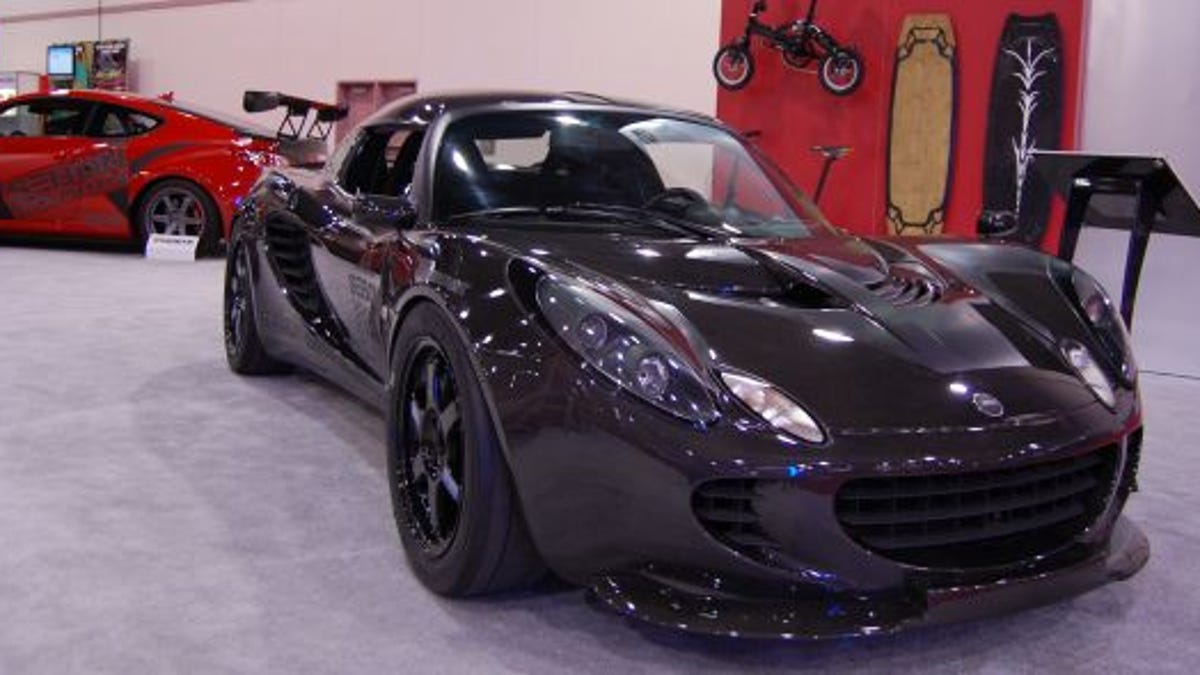Adding lightness with Seibon at SEMA
We stopped by well-known carbon fiber manufacturer Seibon's booth at the 2009 SEMA show to get the skinny on this miracle material.

Most car guys know that carbon fiber is lightweight (and very cool-looking), but most don't know much past that. We stopped by well-known carbon fiber manufacturer Seibon's booth at the 2009 SEMA show to get the skinny on this miracle material.
The term "carbon fiber" can be used to describe microscopically thin fibers composed mostly of carbon atoms, the yarns composed of those fibers, or the fabric woven from that yarn. For our purposes, the term will be used to describe composite materials created from carbon fabric suspended in resin or plastic.
Carbon fiber parts are considerably more lightweight than similar parts made of metal but can be just as strong (or stronger). Low weight plus high strength makes carbon fiber a good material for aerospace and racing applications. Since most good racing technologies eventually trickle down to consumer applications, we're seeing more and more carbon on the road today.
According to Seibon, there are two major types of carbon fiber, wet and dry.
Wet carbon fiber is the glossy type that most consumers are used to seeing. It's made by hand laying sheets of carbon fabric onto a mold between brushed-on layers of resin, which is then cured.
Dry carbon fiber is preimpregnated with resin (and is also known as prepreg carbon). The carbon sheets are formed in a vacuum mold under high heat and pressure, which causes the resin to flow evenly and completely through the formed part with little or no waste. Dry carbon parts are both lighter and stronger than their wet counterparts because they contain less excess resin with fewer imperfections. However, because of the complex vacuum molding required in their creation, dry carbon parts are also more expensive.
Carbon fiber is lighter, but what's the point? Well simply put, removing weight (or more accurately removing mass) from a vehicle also means that the vehicle's inertia has also been reduced, which means better acceleration, braking, and handling. If you can keep your foot off of the right pedal with this improved performance, this can also mean better fuel economy and less wear on parts such as brakes and suspension components.
If carbon fiber is so great, why not just make all cars out of it? The most obvious reason is that carbon fiber is expensive and more difficult to mass produce than sheet metal or plastic. Replacing all of the sheet metal on a vehicle the size of, say, a Toyota Yaris with carbon fiber would probably double the price of the car. Secondly, while carbon fiber is as strong as metal, it's usually only strong when stretched or bent progressively. When compressed or exposed to the shock of sudden impact, carbon fiber becomes brittle and can splinter unpredictably. A dent knocked into a metal or plastic bumper could probably be hammered out, but a carbon fiber bumper would most likely need to be replaced, which can be pricey.
For many, these cons are but minor speed bumps on the road to ultimate performance (or style). Check out our tour of the Seibon booth at the 2009 SEMA show for a closer look at some vehicles that feature heavy use of this lightweight material.

